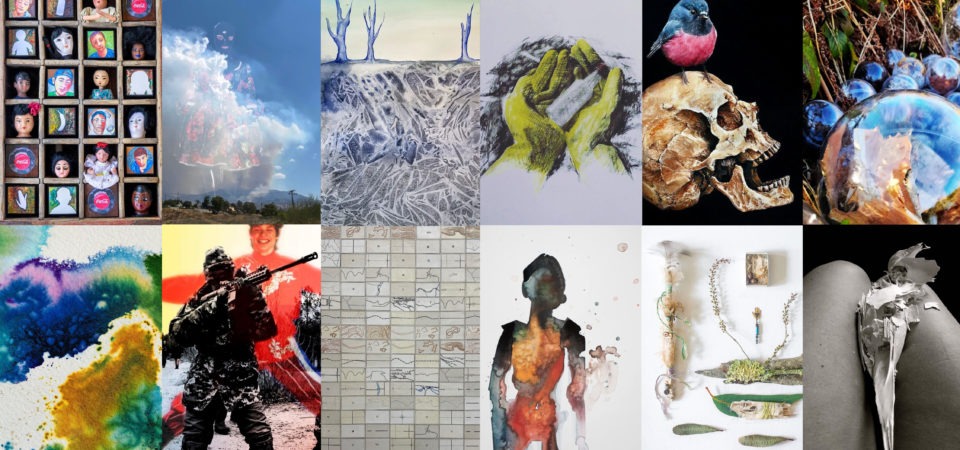Featured Artists:
Kirsten Aaboe (US), Nadine Marie Allan (US), Susan Bercu (US), Marianne Bickett (US), Ana Constantinescu (UK), Christina Conklin (US), Nicole Cooper (US), Alison Lee Cousland (Australia), Yvonne C. Espinoza (US), Michele Guieu (US), Rosemary Holliday Hall (US), Terri Hughes-Oelrich (US), Margaret Keller (US), Deborah Kennedy (US), Michael Kerbow (US), Rosalind Lowry (Ireland), Suzette Marie Martin(US), Quin de la Mer (US), Mona Naess (Norway), Meredith Nemirov (US), Sailev (France), Marcela Villasenor (US), Eileen Wold (US), KY Fina Yeung (US)
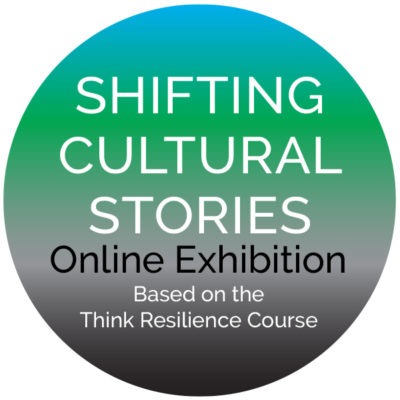 “Society’s goals and mindsets could be thought of as the stories we tell ourselves. Some cultural stories are deeply ingrained in us as a species, while some are the predominant narratives of the particular society into which we have been born. They help us make sense of the world around us, but they may also hinder our ability to foresee big social changes and to adjust our behavior accordingly. Therefore, some of these stories need to change: we may need to shift from the consumer economy to a conserver economy; from valuing things to valuing relationships and experiences; from inevitable growth to a steady-state economy; from a politics of mass persuasion to a politics of local engagement.”
“Society’s goals and mindsets could be thought of as the stories we tell ourselves. Some cultural stories are deeply ingrained in us as a species, while some are the predominant narratives of the particular society into which we have been born. They help us make sense of the world around us, but they may also hinder our ability to foresee big social changes and to adjust our behavior accordingly. Therefore, some of these stories need to change: we may need to shift from the consumer economy to a conserver economy; from valuing things to valuing relationships and experiences; from inevitable growth to a steady-state economy; from a politics of mass persuasion to a politics of local engagement.”
– Richard Heinberg
What’s Next for Earth is following the Think Resilience, the Post Carbon Institute’s free online course written by Richard Heinberg, one lesson at a time. To respond to the Shifting Cultural Stories art call, we asked the artists to signup and to watch the course, one lesson at a time:
Lesson 1: Introduction
PART ONE
Chapter One – Our Converging Crisis
– Lesson 2: Energy
– Lesson 3: Population and Consumption
– Lesson 4: Depletion (Resources depletion)
– Lesson5: Pollution
Chapter two – The Roots and Results of Our Crises
We explore the role of human behavior in our sustainability crises, and dig deeper into where those crises are taking us:
– Lesson 6- Political & Economic Management (Social Structure)
– Lesson 7- Belief Systems
– Lesson 8 – Biodiversity
– Lesson 9 – Collapse
Chapter three – Making Change
– Lesson 10 – Thinking in Systems
-Lesson 11 – Shifting Cultural Stories
Each video is approximately 12 minutes long.
Think Resilience is hosted by Richard Heinberg, one of the world’s leading experts on the urgency and challenges of moving society away from fossil fuels.
We live in a time of tremendous political, environmental, and economic upheaval. What should we do? Think Resilience is an online course offered by Post Carbon Institute to help you get started on doing something. It features twenty-two video lectures—about four hours total—by Richard Heinberg, one of the world’s foremost experts on the urgency and challenges of transitioning society away from fossil fuels. Think Resilience is rooted in Post Carbon Institute’s years of work in energy literacy and community resilience. It packs a lot of information into four hours, and by the end of the course you’ll have a good start on two important skills:
1. How to make sense of the complex challenges society now faces. What are the underlying, systemic forces at play? What brought us to this place? Acting without this understanding is like putting a bandage on a life-threatening injury.
2. How to build community resilience. While we must also act in our individual lives and as national and global citizens, building the resilience of our communities is an essential response to the 21st century’s multiple sustainability crises.
Rosalind Lowry (Ireland)
Instagram @rosalindlowry
Valuing Relationships, Not things
Conserving, Not Consuming
Seed bank Installation, County Tyrone,
acrylic globe’s filled with plant and Sphagnum Moss samples from across an endangered bogland.
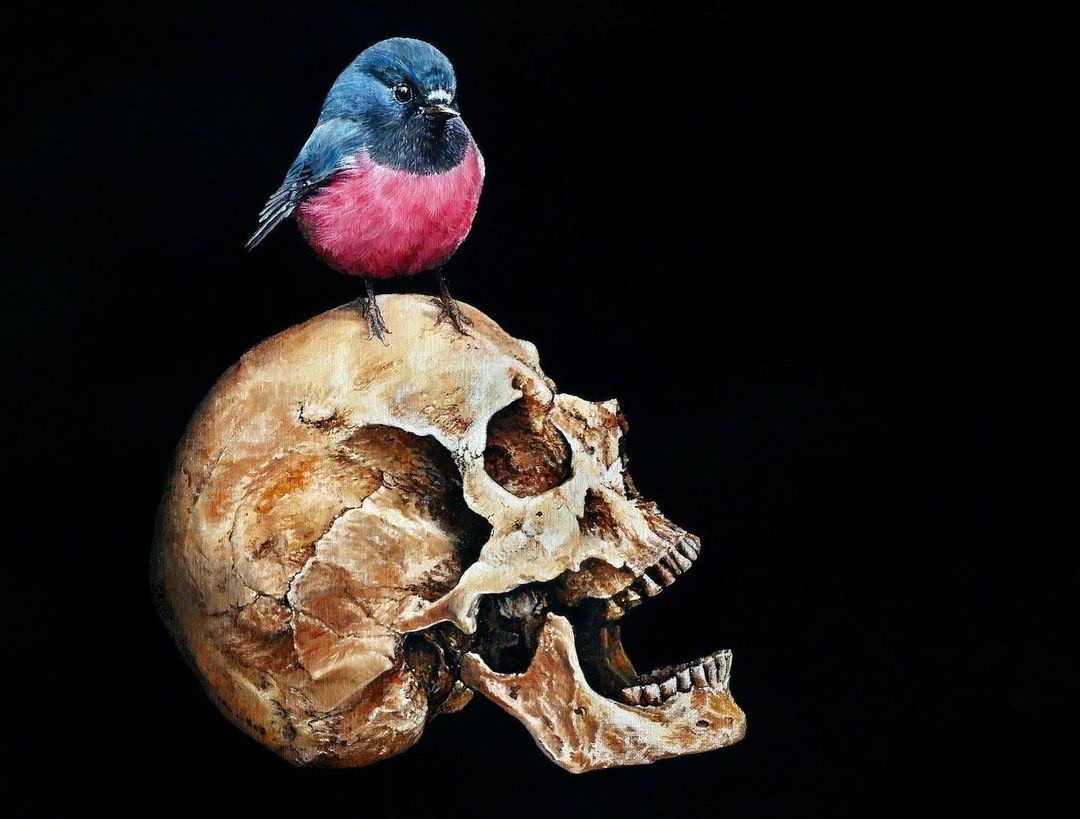
Sailev (Honfleur, France)
Instagram @sailev
Petroica Rodinogaster
Oil on linen
From the series ‘Memento Mori Animalis’.
© 2021 Sailev
Margaret Keller (St Louis, Missouri, US)
Instagram @MargaretKellerStudio
Botanica Absentia
mixed media (aluminum, wood, chrome, laser-cut dichroic Plexiglas, embossed stainless steel, holographic vinyl, light, luminescent dye)
10’x11’x12’
Botanica absentia is an interactive, engaging artwork designed to shift our cultural story to better understand the seriousness of current rates of extinction, along with increasing our awareness of the huge number of endangered and vulnerable species.
Botanica absentia is a memorial to extinct trees, set in an imaginary future after the climate crisis has caused devastation to the point where most species of plants and animals, including humans, have become extinct or mutated in order to survive. As viewers enter the darkened space, multicolored reflections of moving colored shapes, a brilliant holographic rainbow-colored floor, and a massive suspended silver tree limb from the ‘now- extinct’ redbud tree, Cercis canadensis, featuring hundreds of crystal-like, iridescent, dangling seedpods, catch their attention and draw them inside. Hung in a grid and filling one wall, 72 stainless steel tags can be held and read by the public. Each tag is embossed with the common and botanical names of a currently endangered tree. Viewers are urged to take a small card that includes text encouraging personal action to help save these trees via The Red List website. Attached to this card are two small, black pins/buttons that can be worn on clothing. One pin states ‘Botanica absentia’, while the other says ‘Red List’.
Photos: Josh Rowan
© 2021 Margaret Keller
Nicole Cooper (St Louis, Missouri, US)
Instagram @nicolecooperartist
Refuvescence Series
Mixed media on paper
14 x 11 inches each
The term “Refuvescence”—coined by the Bureau of Linguistical Reality’s collaborative climate change dictionary project aimed at creating a new vocabulary for the Anthropocene—is rooted in compost. It defines one interpretation as “A collective moment of transformation when what seems mired, foul and utterly messed up in a society turns, as if by magic, into a progressive and uniting force. Where rotting structures and ideologies are turned or composted into fertile ground for new growth.”
A running cultural narrative I’ve noticed is the belief that people are unable to change. As if our human-built systems are so big that they are out of our control, leaving us stuck with the status quo. Like much of my work, this Refuvescence series is inspired by my belief in the human capacity for change. My experimental paintings each begin with dabs, drops, and splops of random, clashing colors of wet pigment that pool inside the shape of a human form. Out of the mucky pool I work with brushes and watercolor pencil to coax the pigments into an active, blooming surface. Like compost, each human figure transforms into something vibrant and new.
@thebureauoflinguisticalreality Refuvescence (AKA: The Werring, To Wormdazzle) definition.
©2021 Nicole Cooper
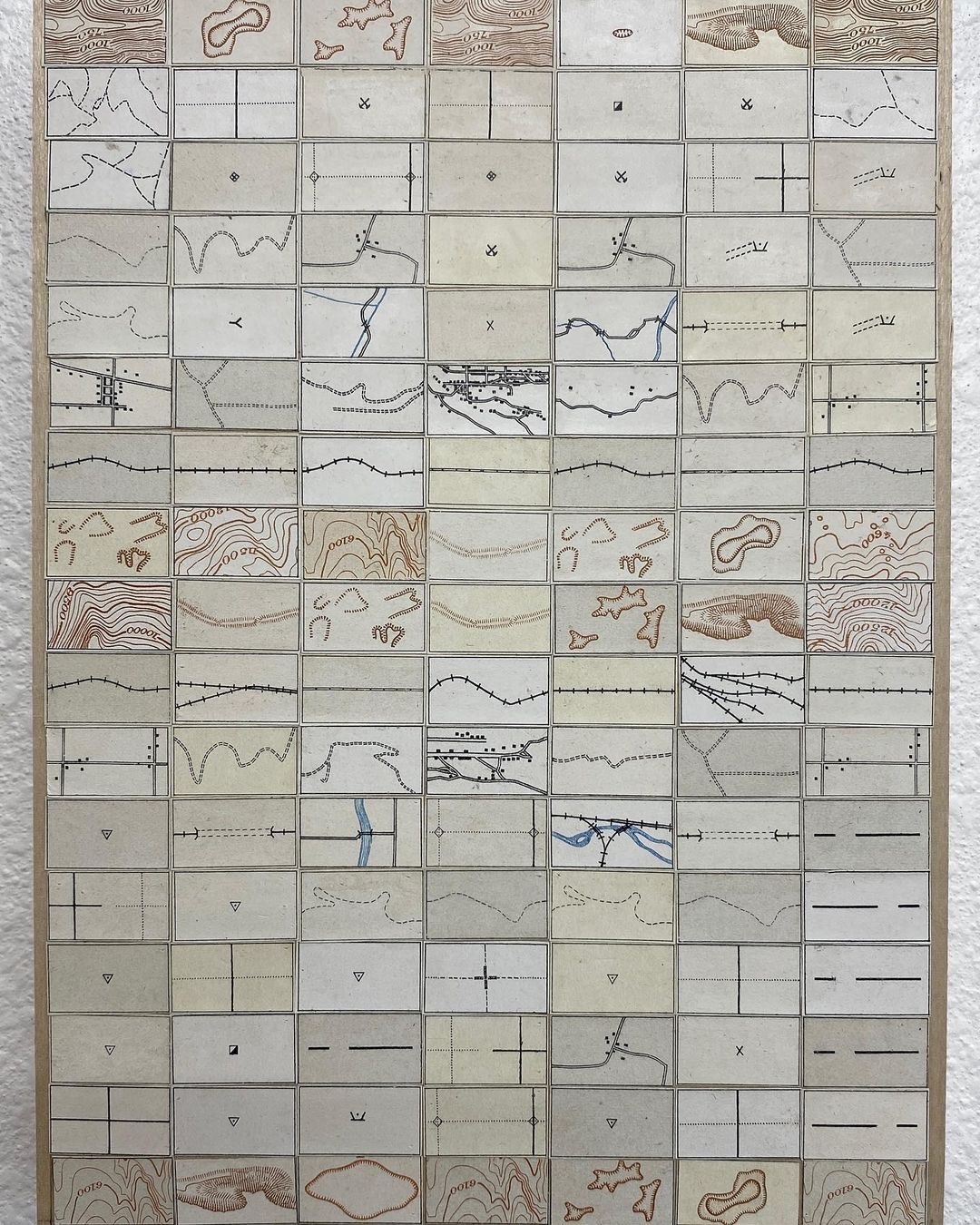
Meredith Nemirov (Colorado, US, and Spain)
Instagram @meredith.nemirov
Legend/Relief
A new series of collages, paper on wood panel
5″ x 7″
A legend is a list of symbols that appear on a map. Represented in Legend/Relief are bridges, tunnels, railroads, trails, etc., man-made aspects of our topography. A continuing effort to maintain, wherever possible, our existing infrastructure can be seen as one part of the shift from a consumer economy to a conserver economy by improving and continuing to use what we have instead of building new roads, bridges, etc.
© 2021 Meredith Nemirov
Mona Naess (Norway)
Instagram @mona_naess
I Found A Bird
3 photographs
I found a dead bird, dipped it in liquid porcelain, burned it – and broke it.
A reminder of the vulnerability of nature and our own influence.
© 2021 Mona Naess
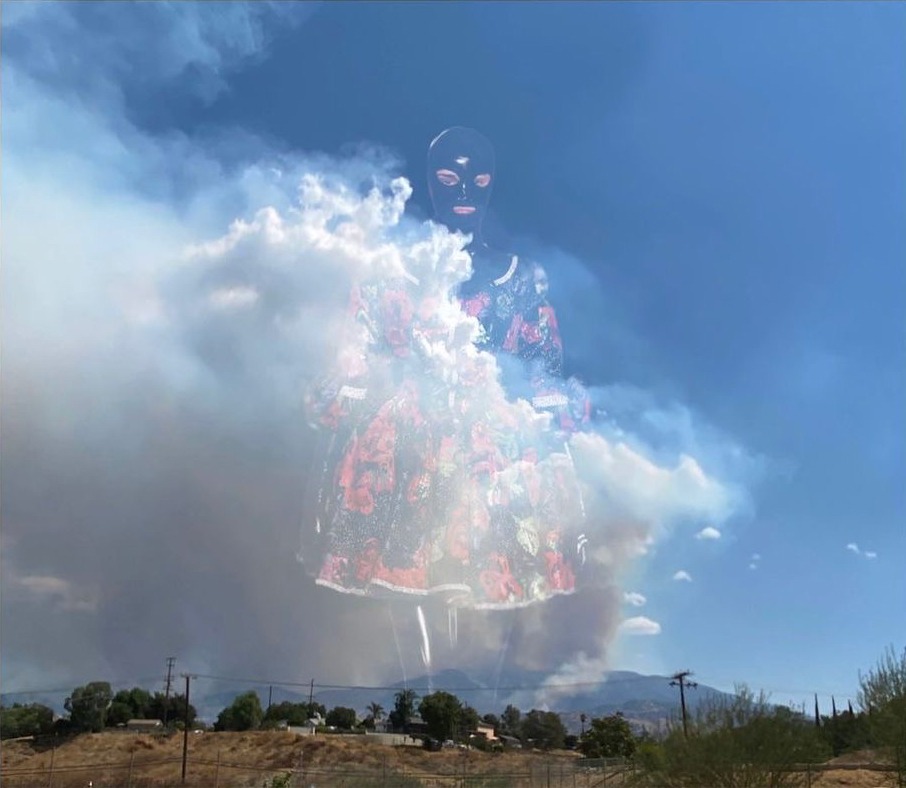
Quin de la Mer (Indian Wells, California, US)
Instagram @i3rstudios
The Spirit of Los Angeles
iPhone photography, digital collage,
direct to media print on dibond
36×42”, 2020/22
On September 6, 2020, I was enjoying the view of the San Gabriel mountains from a lookout point on Mulholland Drive. We were still in the depths of lockdown due to the Covid-19 pandemic and this outdoor space was a refuge. As I watched, a tiny wisp of smoke appeared, spiraling its way skyward.
The fire spread quickly, becoming one of the largest fires on record in Los Angeles county, burning 115,796 acres and making several types of wildlife face extinction.
I photographed the fire as it raged. When I contacted local friends with words of sorrow, they were nonplussed saying things like, “We always have fires… it’s just Los Angeles… They won’t let it get to people or houses or businesses or stuff… good thing it’s Covid and we have masks”. Los Angelean’ perception is so dedicated to consumer ideals, and anthropocentrism, it really weighed heavy on my heart. In response, I digitally collaged super models wearing designer clothing that emphasized mask-wearing during the pandemic over the images of the wildfire.
In support of Post Carbon Institute’s resilience course, I feel this artwork speaks to the need to shift from a consumer economy to a conserver economy. “The story of consumerism appealed to people’s love of novelty, and it fed on our deeply ingrained urge to display symbols of status. Advertising contains millions of images and messages, but all tell essentially the same story: human satisfaction derives from the ownership of certain objects.” “Consumerism replaced satisfying experiences of making, growing, repairing, and sharing with the momentary buzz of buying a new manufactured product. We need to reverse that bargain.” -postcarbon.org
© 2021 Quin de la Mer
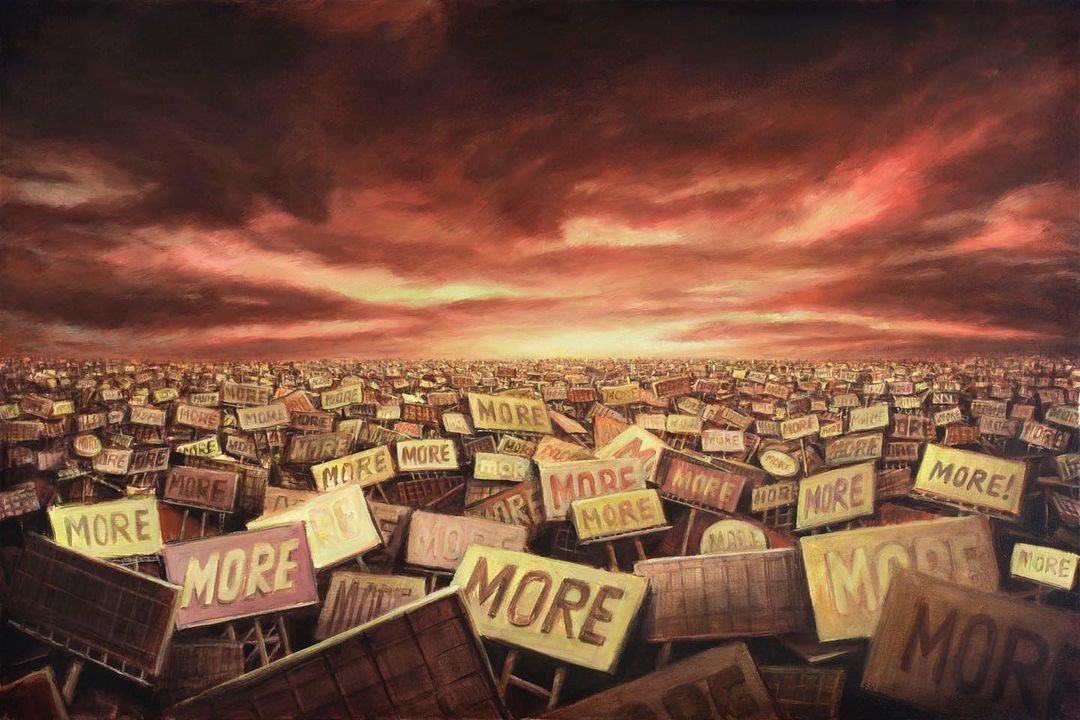
Michael Kerbow (California, US)
Instagram @michaelkerbow
Saturated Markets
Painting
Although my painting “Saturated Markets” from 2018, with its vista of billboards displaying the word MORE could certainly be thought of as a commentary about economic hyperinflation, it’s a wry critique of contemporary society’s insatiable appetite for consumerism. Invariably I see this activity as creating unwanted consequences upon the planet. (Hence the apocalyptic-looking sky). I don’t know what awaits us in the future. I just try to encapsulate what I see happening in the world today for others to consider.
© 2021 Michael Kerbow
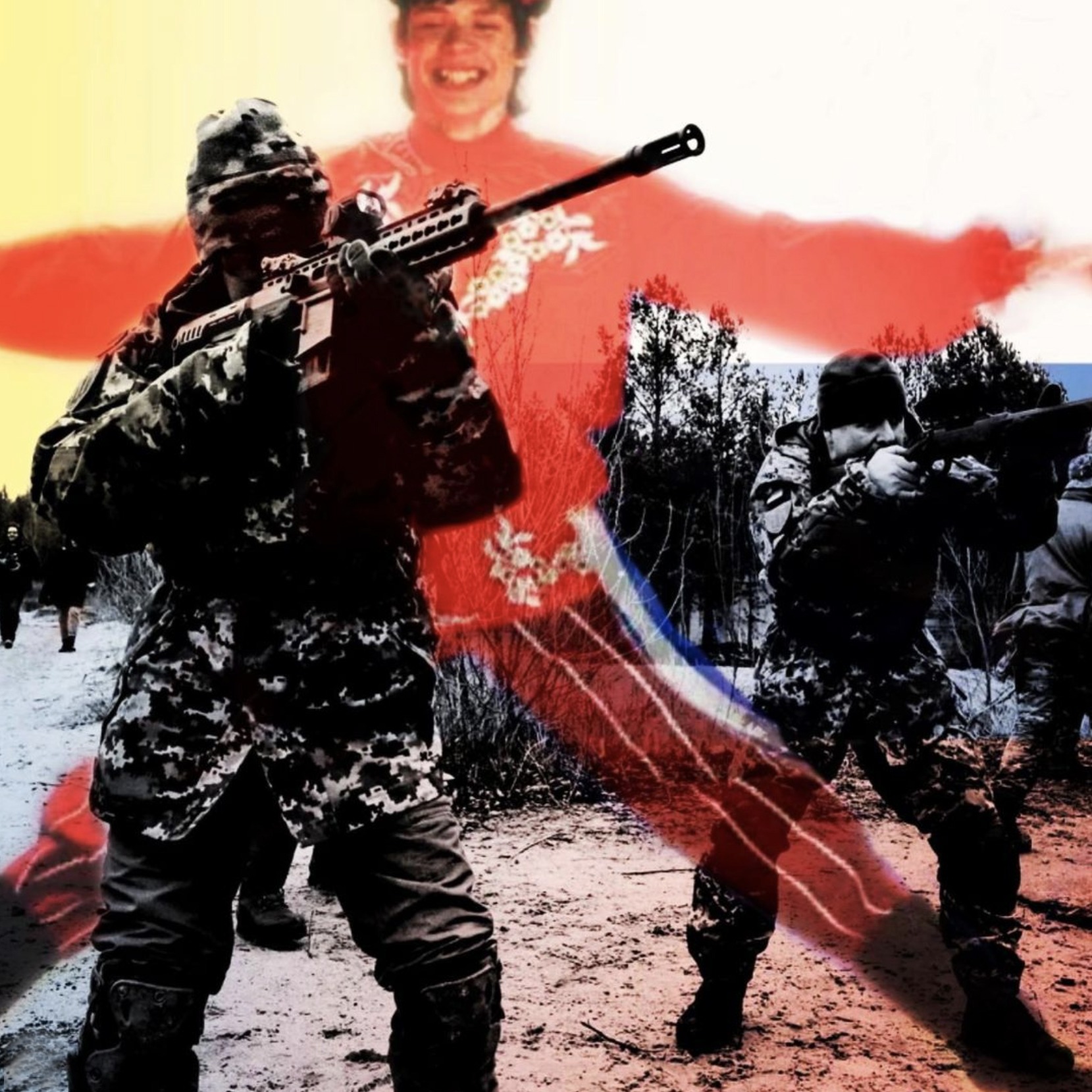
Marcela Villaseñor (California, US)
Instagram @mvillasenor
From Best Dancers to Best Killers
De los Mejores Bailarines a los Mejores Asesinos
Digital collage
March 2022
© Marcela Villaseñor 2022
Rosemary Holliday Hall
Instagram @rosemaryhhall
Cradle to Grave
soil spheres
“Matter doesn’t disappear it transforms, energy is the same way. the earth is layer upon layer of all that has existed, remembered by dirt. it is time to turn capitalism into a fossil, time to turn the soil. – Adrienne Maree Brown, Emergent Strategy.
Cradle to Grave is a diagram of a newton’s cradle constructed with soil spheres. newton’s cradle demonstrates newton’s 3rd law of motion: that every action has an equal and opposite reaction. it also seems relevant in describing some moments of societal change. how do we change to embody the worlds we long for? to care for the soil as self?
I’ve been making these spheres for a few years now. I make them while walking in different environments. As I walk, I build up and compress dusted layers on the surface embodying a human geology. The form relating so directly to my hands that I’ve begun to understand my hands as a sphere. Making them in the environment becomes a meditation on the layers of place ♾ self.
They are all different and hold distinct memories of a walk somewhere often near water: the Ventura river bottom, Sespe, cozy dell trail, my back yard. This particular set is from soils near my home.
© 2022 Rosemary Hall

Ana Constantinescu (UK)
Instagram @AnaCo.art
Below the Surface
watercolor and acrylic inks on paper
297 x 420 mm
The tales we tell ourselves about the world are mostly knowledge we inherited growing up, personal experiences and stories guided by society.
Navigating today’s world, it is fascinating discovering the complexity of our society and humanity. In these times, it is important to question the world around us and be open to the possibility of a vaster truth, of a bigger picture and strive to find solutions.
The painting illustrates the world of undiscovered and fascinating possibilities that lie just below the visible surface.
© 2021 Ana Constantinescu
Eileen Wold (Seattle, Washington, US)
Instagram @eileentwold
Fragmented Remains
Transfer drawing of charcoal, pencil, and watercolor,
photographs
A project that examined washed-up objects found on a mile stretch of shoreline behind a harbor hospital in Baltimore City. I collected trash for months, taking time to consider each object found. Mostly vessels, packaging, and containers, these objects were made to be discarded. Never before has a civilization produced such abundance with an intended use duration of seconds. It is a cultural norm that must shift. Design, production, packaging, and consumption. Transfer drawings of charcoal, pencil, and watercolor were paired with photographic documentation of the collection process.
© 2021 Eileen Wold
Christina Conklin (California, US)
Instagram @bychristinaconklin
Mappamundi
Ink on algae on paper
30” x 22”
2021.
For this call, I printed a circular algal mat I harvested from Tomales Bay, using only blue and golden yellow inks. To my surprise, the resulting map of world, complete with continents and seas emerged, befitting the “shifting cultural stories” call far better than If I had planned it.
I only made this print after becoming totally frustrated at my efforts to make a magazine collage that captures the depth of transformation required in our current cultural moment. I suppose it shouldn’t have been a surprise that I couldn’t extract a new paradigm from the same old capitalist materials. That algae would save the day again. Lesson learned (again!)
© 2021 Christina Conklin
Suzette Marie Martin (North Adams, Massachusetts, US)
Instagram @szttmrtn
Naiad de la Riviere d’Hudson, 1778
ink drawing on a reproduction of a North American colonial map
From the “Naiads of the New World” series.
The classically educated Europeans who mapped the New World were likely familiar with the river nymphs of Greek mythology. My naiads mark the passage from millennia of “uncharted territory” to the eradication of indigenous cultures, and extensive environmental changes, that began during European exploration and settlement of the New World. Their bodies passively incorporate waterways renamed by each group of colonizing peoples.
What are the current stories we tell about the living landscape? Whose stories are “real”? How is an ecosystem different from something viewed as a “natural resource”?
The capitalist story of eminent domain, private property ownership, the rights of corporate entities to privatize, extract and destroy the commons (land, air, water, soil, plants, animals) has led to massive disruptions in the health and sustainability of the entire ecological systems, including planetary climate.
Taking direct physical action to change the pace and trajectory of toxic emissions into the commons is extremely urgent. But it may be equally urgent to create new stories and mindsets that support restoration, sustainability, and justice for all living creatures on this earth.
The entire series of naiads can be viewed on Suzette Marie Martin’s website.
© 2021 Suzette Marie Martin
Michele Guieu (Sunnyvale, California, US)
Instagram @micheleguieu
Exploring the Lifeline
Temporary assemblage made of driftwood suspended from an olive tree
Breil Sur Roya, France
7’H x 5’W x 2’D
I am immensely thankful to be an artist and experience what it feels like to create and make outdoors in nature—choosing the materials within what is available on site or nearby, feeling the temperature, watching the birds, looking at the trees—paying attention to the changing light. These precious experiences provide inner peace and alleviate my growing anxiety about the catastrophic future we face.
I dream that everyone experiments with non-destructive, simple, beautiful practices, and expresses their creativity with joy. Nature, our lifeline, could be the source of everyone’s daily inspiration, courage and awe.
Don’t you think it could change the world?
[…] “The story of consumerism appealed to people’s love of novelty, and it fed on our deeply ingrained urge to display symbols of status. Advertising contains millions of images and messages, but all tell essentially the same story: human satisfaction derives from the ownership of certain objects. To get away from consumerism we will need to replace those satisfactions and symbols not just with vague promises, but with real experiences, and with stories that appeal to our deepest human aspirations. Consumerism replaced satisfying experiences of making, growing, repairing, and sharing with the momentary buzz of buying a new manufactured product. We need to reverse that bargain.”[…]
Richard Heinberg, from “Shifting Cultural Stories”, part of the Think Resilience online course by the Post Carbon Institute.
© 2021 Michele Guieu
Alison Lee Cousland (Sydney, Australia)
Instagram @allyinspirit.gridofnine
Grey: Blue: Green:
Shrines and wands mainly from natural, repurposed,
and recyclable eco-friendly materials
Grey: Blue: Green: Her eyes: Had been bleeding: Her strong heart: Had been weeping: Her fragile spirit: Pining for a new way to be.
Walking in the rain: Barefoot over the soggy mire, Her vision cleared: Her heart celebrated: Her spirit strengthened: As she re-connected to Life. ~Ally.
Consumerism has replaced satisfying experiences of making, growing, repairing, and sharing with the momentary buzz of buying a new manufactured product. We need to reverse that bargain. ~Richard Heinberg.
And from Charles Eisenstein: The more we came to live in that artificial reality (story), the more separate we became from the inherently fascinating realm of nature and community. Today, we apply further technology to relieve the boredom that results from our immersion in a world of technology. We call it ‘entertainment.’
Our craving for ‘entertainment’ points to the impoverishment of our reality ‘story’ and the removal from our self and the real world.
♥︎♥︎⚖️♥︎♥︎
I make items such as these shrines and wands mainly from natural, repurposed, and recyclable eco-friendly materials: Art pieces that are made with intent and designed to be given as gifts to friends: Keeping in mind that ‘when their time has come’ they can easily be given back to the earth.
In this series, one of my ’shrines’ has been integrated with my daily ‘pocket finds’ and other little stitched ‘charms’ that I make: Both in-studio and bush.
Shrine Inspired by Aimee Bishop.
Day 5, 6, 7, and 8 of my 100 Day Project. #100integrationsbyally2022
© 2021 Alison Lee Cousland
Alison Lee Cousland (Sydney, Australia)
Instagram @allyinspirit.gridofnine
Her eyes: Had been bleeding
Shrines and wands mainly from natural, repurposed,
and recyclable eco-friendly materials
Her eyes: Had been bleeding.
Her mind: Had been fed such stories.
Her strong heart: No longer believed them.
Her still fragile spirit: Longed to re-connect with nature:
And the very real world of fairies and devas:
She had been told they were unreal:
But in her quest to be sovereign:
She knows different. ~Ally.
‘Shifting Cultural Stories’ is a key concept when we try to address the meta-crisis that is unfolding because it points to the cause and not the consequences of all the aspects of the crisis. ~Michele Guieu.
The more we came to live in that artificial reality ~ After being fed a lifetime of stories, like angels and fairies are imaginary and that humans are the center of the Universe, etc ~ The more separate we became from the inherently fascinating realm of nature and community. And it was best just to buy and be entertained by more and more man-made gadgets, so as not to feel the discomfort/pain of being disconnected to Source/Self/Nature) ~Added to original quote by Charles Eisenstein.
I make items such as these shrines and wands mainly from natural, repurposed, and recyclable eco-friendly materials: Art pieces that are made with intent and designed to be given as gifts to friends: Keeping in mind that ‘when their time has come’ they can easily be given back to the earth.
In this series, one of my ’shrines’ has been integrated with my daily ‘pocket finds’ and other little stitched ‘charms’ that I make: Both in the studio and the bush.
Shrine: Inspired by @aimeeirel
Day 9,10,11, 12 and 13 of my 100 Day Project. #100integrationsbyally2022
© 2021 Alison Lee Cousland
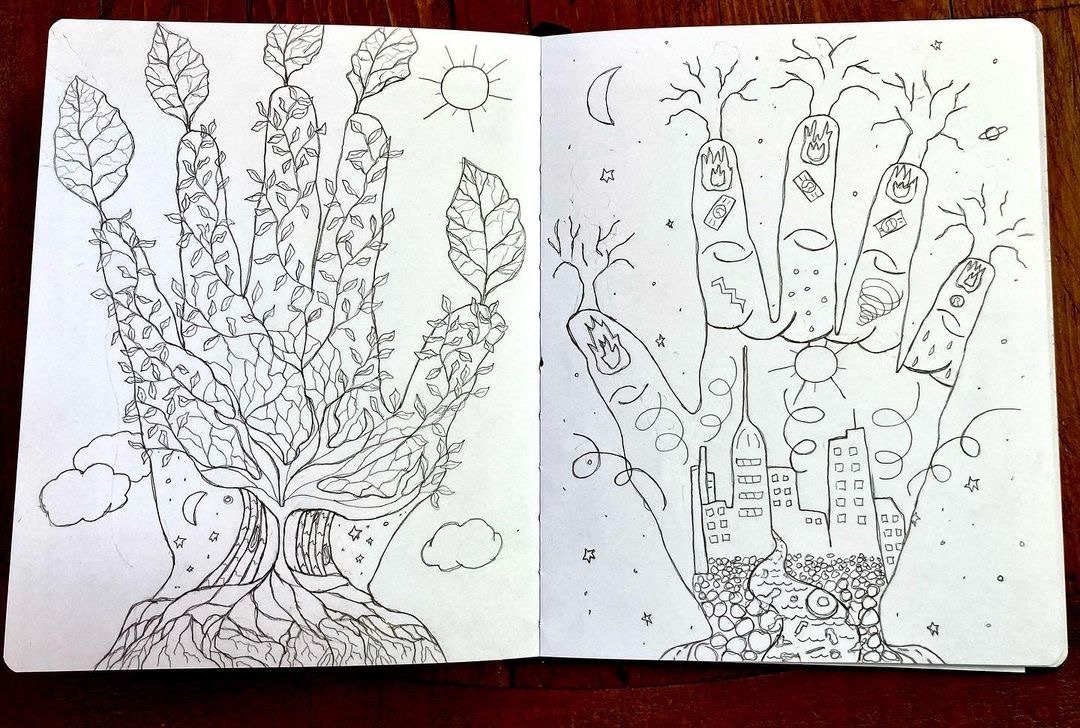
Marianne Bickett (Oregon, US)
Instagram: @mariannebickett
Once Upon A Time
Pencil on paper in journal
A picture tale of two stories.
On one hand, overproduction created tales of riches to make us happy, make life easier, stories about all kinds of things we didn’t know we needed! Consumerism became the new religion, hallelujah, more stuff!! Wow! Grow, grow, grow!!! Regardless of the consequences, human greed is at the heart of this sad tale.
On the other hand, there are the ancient stories of the wisdom of trees and living as earthlings on a beautiful, vibrant planet where we rethink our predicament and choose to become a Conserver economy. Life is rich as we rediscover our roots and focus on relationships and experiences. Nature becomes a source, not just a resource to plunder. We sing the songs of beauty and respect for all life on earth.
The change will be difficult, but we create our future right now by the decisions we make today. Which hand wins?
© 2021 Marianne Bickett
Nadine Marie Allan (Chinatown, Los Angeles, US)
Instagram @naydino
Do You Feel It Too?
Projection mapping on string drawings
Do you feel it too? Your mental state hangs on a thread, dictated by a complex net of stories. The myths we hold onto are powerful things, they dictate our goals and mindsets. In our digital era where it is so easy to make imaginary connections fed by algorithms that seem to mock our desires, only to direct them. We have moved beyond the consumption of things, to becoming products of consumption.
Our minds are too distracted by tactics of emotional persuasion to be able to harness the intelligence, understanding, and cooperation to address our complex systemic issues.
It is time that we recognize the beasts in stories that we’ve inherited and create our own collective story. Let us move from our ingrained urge to display symbols of status through ownership and beauty as resources to be plundered. Let us change the collective myths. Let’s embrace experiences of making, growing, repairing, and sharing.
© 2021 Nadine Marie Allan
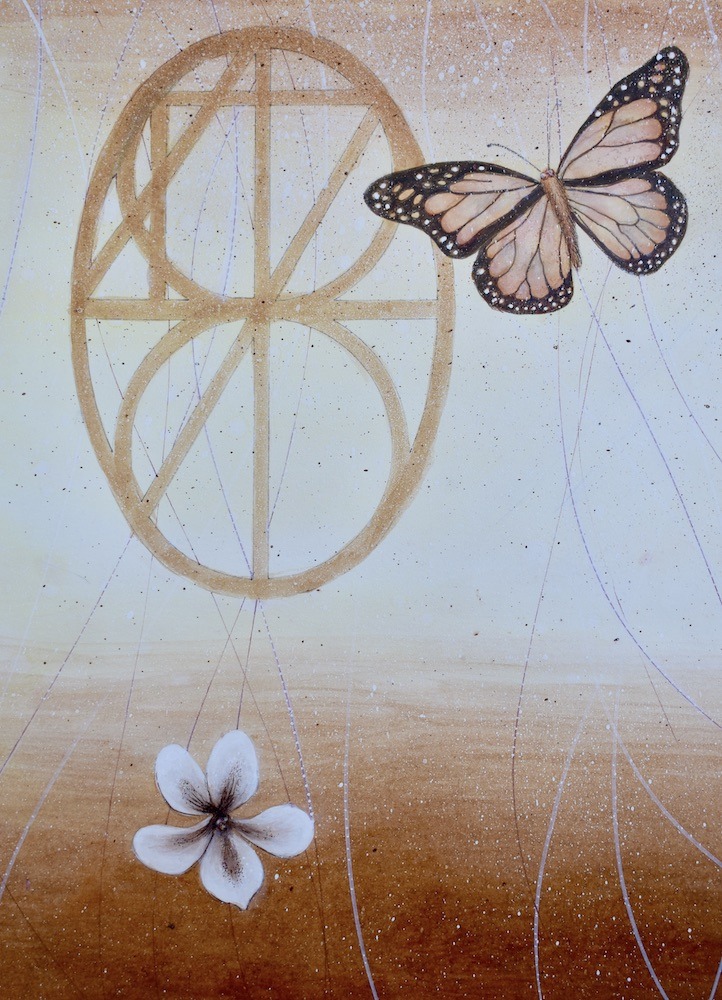
Deborah Kennedy (California, US)
Instagram @deborahkennedyart
The Cosmic Egg
Ink drawing
This detail of my ink drawing features a monarch butterfly, a white violet, and an ancient symbol–the cosmic egg. The cosmic egg contains all the characters from our alpha-numeric system and thereby, our wisdom. I want to see a day where we use our wisdom to celebrate and foster the biosphere that gives us life each day. When will give up our war against nature and learn to work with the life forces that are crucial to our own survival?
© 2021 Deborah Kennedy
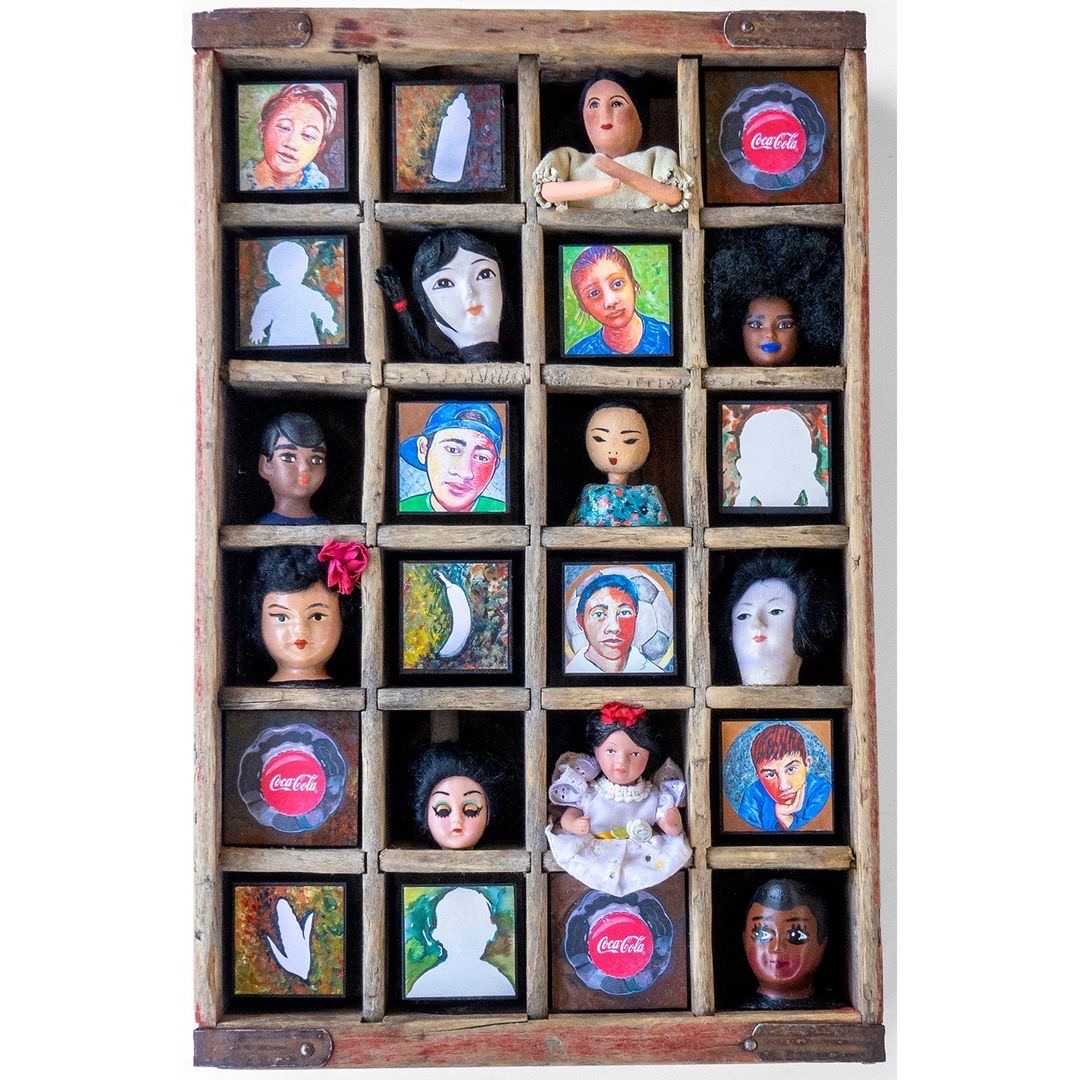
Susan Bercu (Santa Rosa, CA, US)
Instagram @susan_bercu
Just Knick Knacks
Assemblage inside a Coca Cola wood crate uses the heads of recycled dolls and my paintings (reduced) to fit each cubbyhole
12 W x 18 H inches
The concept of race is the insidious cultural story that must shift if we humans are to survive. “Just Knick Knacks” calls out egregious institutionalized prejudice.
The categorization of people by color or country of origin is a calculated invention of the oppressor to dehumanize and trivialize the “other” people as “Just Knick Knacks”. Our country was built on the backs of African slaves with the justification of labeling them an inferior race by those who enslaved them.
The Coca-Cola crate represents the unlimited power of giant corporations. Sugar, an addictive, non-nutritious substance is a symbol of greed dispensed across the planet. Each cubbyhole imprisons a victim of racism. The seven migrant children memorialized in my paintings and reduced to fit inside the case, died while in ICE custody between 2018 and 2019 under the Trump administration Zero Tolerance policy that Illegally and cruelly separated families
Racism, permeating the entire globe is the obvious result of “expedient” racial labels and leads to our demise with refugees, wars, poverty. We lose our family, home, livelihood, health, community. Our humanity.
© 2021 Susan Bercu
A Soil Waltz: Stirring Camaraderie, Compassion, and Change
Repurposed textile, jewelry, beads, and glass and shells on stretched canvas.
24”H x 30”W (unframed)
“As a species, we tend to move away from the unattractive and difficult path. This is where art, in all forms, is able to travel. We journey with the characters in great works of literature, we dance to the layered beats of drums and the strums of bass riffs, we see the ability of original art transform our perspectives of reality. Within each “newness” we take the risk to read, listen, view, move or think from a different angle.
This is the realm where I am working. The place where there is the perpetual battle, the ever-building of communities, the influences of cultures (microbial and otherwise), and the hybridization, mutation, decimation, and creation of something different. There is a raw truth that can be frightening.
What also exists is the utter beauty the awe embodies. There is a battle and there is a dance.”
© 2021 Yvonne C. Espinoza
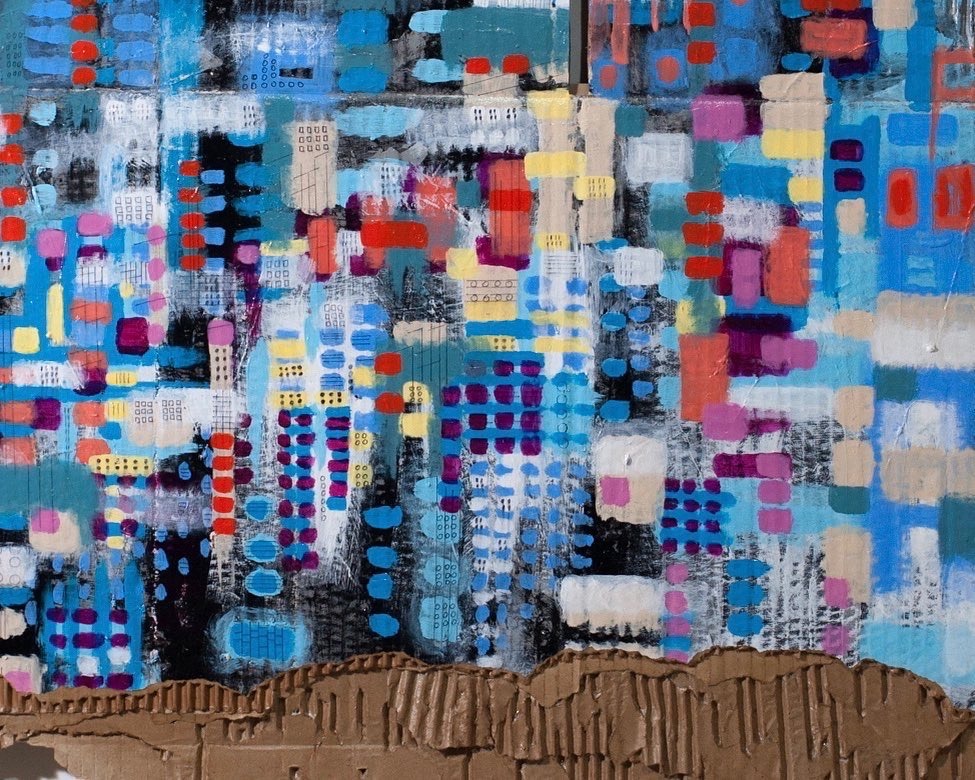
KY Fina Yeung (NYC, NY, US)
Instagram @veryfineart
Acrylic on cardboard
24”x36”
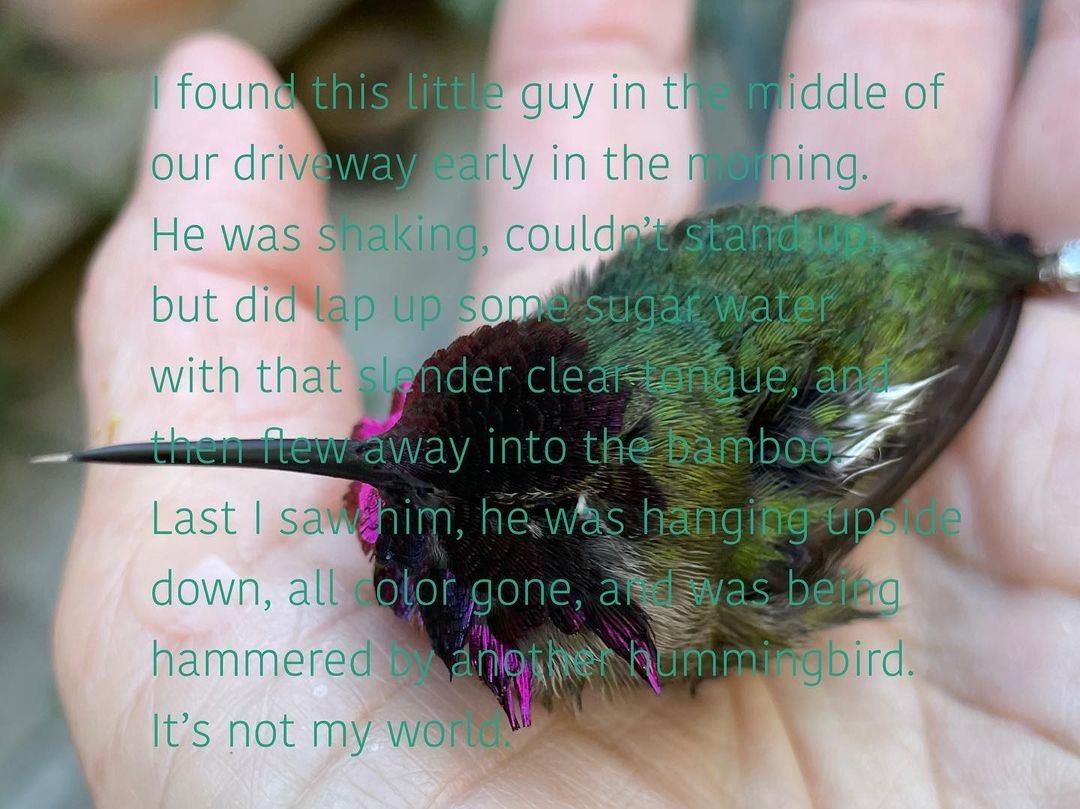
Kirsten Aaboe (San Diego, California, US)
Instagram @kitaaboe
A Tiny Ascension
digital photomontage
What happened to this little bird was completely beyond my control. How I see my role as caretaker of what is in my world requires gentleness, understanding, kinship, and awareness beyond my own immediate desires. How I connect with my world requires the application of the determination to cherish life in all its forms.
© 2021 Kirsten Aaboe
Terri Hughes-Oelrich (California, US)
Instagram @hughesoelrich
Plastic Straws Use 1930 – 2025
Animation
2022
© 2021 Terri Hughes-Oelrich
What’s Next For Earth is an art project created by Michele Guieu, eco-artist, and MAHB Arts Coordinator, to reflect on the climate emergency, the human predicament and envision a desirable future. The project is supported by the MAHB. If you have any questions, please send a message to michele@mahbonline.org.
Thank you ~

